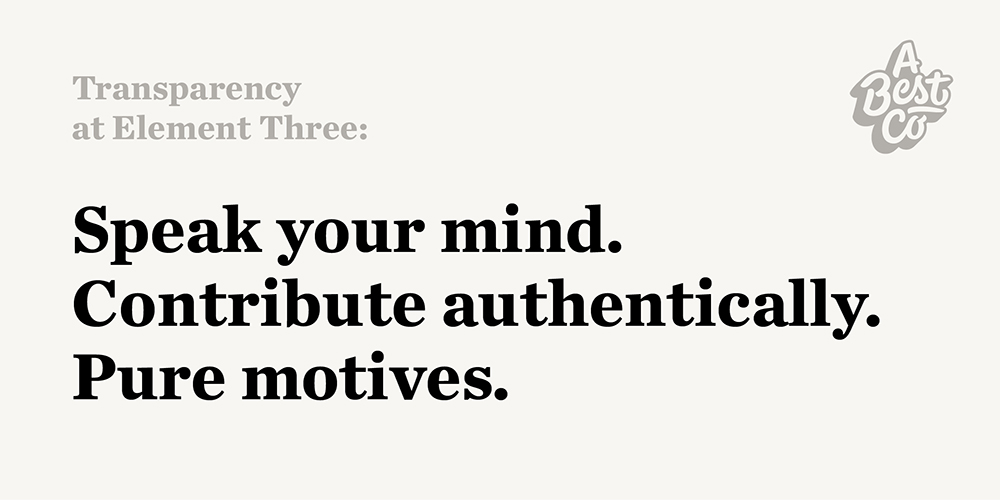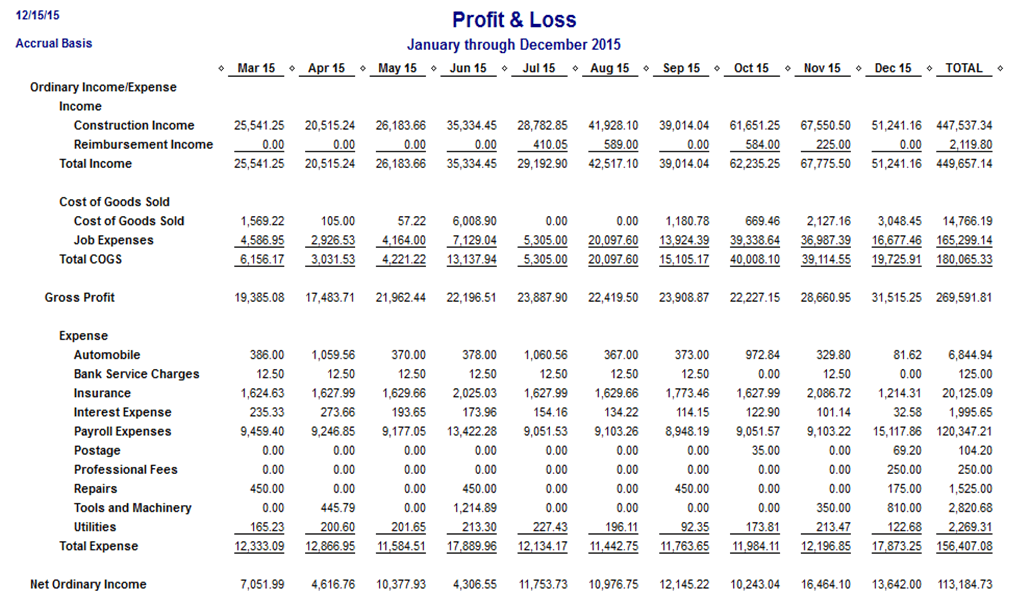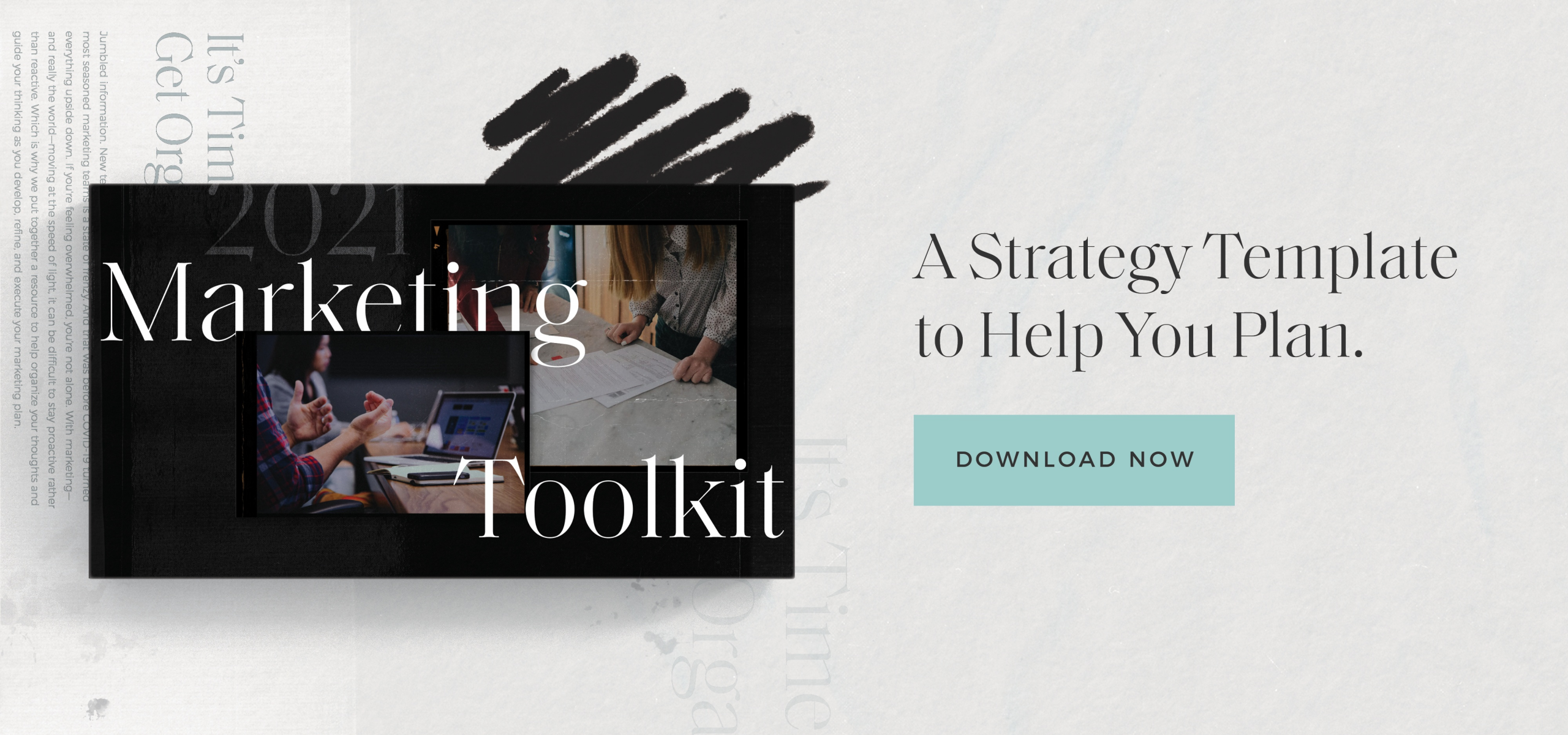Say what you mean, mean what you say, and do what you say you’ll do. It sounds simple, but in practice it proves much more difficult. People and organizations often struggle with consistently following through on all three elements of the equation.
Why?
Well, we are socialized from a young age to be agreeable. In school you were told to raise your hand and wait to be called upon before speaking. On the field you were told to listen to your coach and follow instructions. Behavioral studies tell us that 82% of people are conflict averse and 95% of people struggle to speak up to their colleagues about their concerns.
If we can’t address the first part of the equation—saying what we mean—then it is nearly impossible to get the desired outcome. Because in order to mean or do what we say, we have to have said what we mean in the first place.
What is transparency in business?
Across all layers and aspects of business, it’s imperative to say what you mean. Often, this sentiment comes to life through a core value like transparency. The Business Dictionary defines transparency as a “lack of hidden agendas or conditions, accompanied by the availability of full information required of collaboration, cooperation, and collective decision making.”
At Element Three, we recognize transparency as one of our core values. Here’s how we define it:

How Element Three defines transparency in business
So, what does transparency in business really mean?
It means being authentic in the way we message ourselves externally—to stakeholders, to prospective customers and talent, and within our community. It means our leadership team strives to clearly and effectively communicate messages across the organization. It means our management team commits to ensuring conversations with their direct reports are meaningful. It means work partners and peers respect one another enough to confront issues and problems as they arise in order to push the work product and team to the next level.
Fitting transparency into your business ecosystem
When you are creating your core values or considering adding an additional value into your business, you have to think about how the value stretches across all aspects of your organization and business. For us, transparency applies to peer-to-peer communication, but it also involves teams, individuals, and even clients. If you’re creating a core value as a response to a particular situation, you should think first about whether and how it relates to your entire business, because if it only applies in isolation, it might not qualify as a core value.
Now you know what transparency means to us at Element Three and a little bit about how to define core values, so we’re going to take a look at how we practice transparency in the workplace through open-book financials and a zero-tolerance policy for drama triangles.
Open-book financials
The basics of open-book financial management involve sharing information with employees to not only help them do their jobs effectively but to also help them understand how the company is performing. John Case, the man who claims to have invented the concept of open-book management, distills the benefit down to this: companies perform better when people see themselves as partners in the business rather than hired hands.

A generic business P&L
So, what does this mean for us at Element Three? Well, once a month our organization gets together for a financial review of the company. Tiffany Sauder, our CEO, walks the organization through the financials for the previous month, as well as how we are performing in the year to date. She shows the organization how our budget stacks up against our actuals, and provides helpful commentary as to why we are over or under our projections. She also tells us what we might expect going forward based on our forecasts and actuals and what we’re seeing from clients and prospects.
Get everyone on the same page—good or bad
We show it all—the good, the bad, and the ugly. When we are in a good place financially we share plans for office improvements—whether that means adding a phone booth on each floor to create space for important impromptu business or personal calls, or extra swag for our company kickball team. When we are behind forecast we talk openly about plans to generate revenue and the expenses we need to temporarily freeze. These discussions might be less fun, but honestly they’re the more important ones—and that’s part of what transparency in business is all about. When everyone in the organization is operating from the same information, you are able to have open, honest, and transparent conversations with one another about what is happening with the business.
While you might be limited in the amount of transparency you can offer, think about the things you can be open about. If it’s not financials, is it company goals? The way you communicate? At the end of the day, it’s not about sharing everything or nothing—it’s about finding a balance between transparency and confidentiality that empowers employees with information they need to be their best selves.
Zero tolerance for drama triangles
We believe that our organization cannot be fully transparent unless we hold each other accountable and dissolve the dreaded drama triangle.
The drama triangle is a social theory developed by Stephen Karpman that maps destructive interactions between people during moments of conflict and models the connection between personal responsibility and power. The theory includes three roles: The Victim, The Rescuer, and The Persecutor, which represent the three faces of drama.
The Victim usually adopts a stance of “poor me!” and is unable to make decisions or take control of their environment. The Rescuer is famous for the line “let me help you”; essentially they are a classic enabler. Victims are dependent on the Rescuer, and in turn, the Rescuer gives the Victim permission to fail. The Persecutor insists “it’s all your fault.” They are controlling, critical, and always looking to place blame. A drama triangle arises when a person takes on the role of a Victim or Persecutor and feels the need to enlist other players into the conflict. By triangulating conversation, the Victim or Persecutor is looking to rally for support or to avoid delivering a message directly.
At Element Three (and honestly, any workplace), there is no room for drama triangles, which is why we developed an accountability framework. We encourage everyone to be responsible for their work and to answer for the repercussions of their actions.
The solution? Direct and honest communication
In practice, this means if you do not have what you need to complete work, move a project forward, or do your job effectively due to the failure of another to meet the responsibilities of their role, you are responsible for addressing it with them directly. We believe having a direct one-on-one conversation is the most efficient way to resolve an issue with accountability.
Obviously, there are instances in which confronting a coworker can be complicated—maybe they are your superior, for instance. In a case like this, we recommend the inclusion of a facilitator, someone both parties agree upon who serves as an active but impartial listener. In the event a direct 1:1 communication does not resolve the issue, nor does the inclusion of a facilitator, we then encourage folks to elevate the conflict to a member of the executive team for resolution.
Because of this accountability framework, our employees know that if they bring their drama to a coworker, whether that’s a peer or a supervisor, more often than not the reaction they are going to get is something to the effect of, “well, have you addressed this problem with so-and-so?” It sounds simple, but placing transparency at the core of conflict forces you to say what you mean, which is critical to transparent communication.
If your organization struggles with drama triangles, consider creating your own accountability framework. Or steal ours. It’s not rocket science, but it is important and should be documented.
Transparency in business looks different for everyone—but make it intentional
You know your business and your staff better than anyone else, which means you know best what will and won’t work for you. Transparency isn’t a one-size-fits-all solution, and what we do here at Element Three might not fit your culture, or your industry. But that does not mean you can ignore it. Determine your specific needs, and build a plan to get there. No matter how it manifests itself for you, internal transparency is one of the most important ways that you can support and build healthy relationships in the workplace and increase buy-in from your employees.






